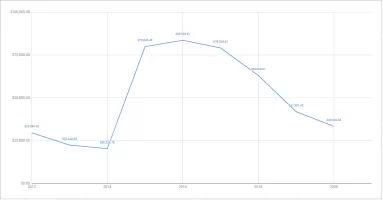- Joined
- Oct 6, 2020
- Messages
- 149
- Location
- Denver, Colorado, United States
Rep Bank
$840
$840
User Power: 142%
I am a mechanical engineer by profession. I liked the job when I was on a learning curve. I still do like it - sort of. But, lately, I experienced too many people who hire you for your expertise and help, and then do not listen to you, blame you for their own stupid decisions, blame you for over-designing the projects, blame you for contractors mistakes and how come your plans didn't show how to install this or that... I got sick of all this. So one day, I started looking for an opportunity where I would not be required to deal with all this bullshit. Starting a business? No, you still need customers (mostly unreasonable, not knowing what they want, whining all the time), you need employees (worst thing ever to deal with employees which are not committed and it is hard to make them treat the business they work in as their own), you need supplies, suppliers, subs, storage (if you are in a product business or selling stuff, or even manufacturing it), urging unpaid invoices, sue people for not paying you, being sued for mistakes of others... give me a break. I have been there, and I do not want that. And don't take me wrong, I was on the executive levels, not just an employee.
The only answer I found to my problem was the stock market. But not the stock market MJ talks about and most people here think about (as a casino). Not a buy and hope strategy, but active trading management. It took me a few years to develop a viable strategy that would work for me, make me money, and quit the rat race. Investing and trading are simple, but not easy. One market wizard once said, "trading in the stock market is the hardest way to make easy money".
After years of learning, reading, practicing, and trading, learning from my mistakes, I developed a strategy that generates income in any market (up, down, or sideways). And that's all that matters to me. Make money, I can spend to pay the bills and not have to deal with anything and anyone.
Well, I am not in my early retirement yet but on the path there. If things continue the way they do, I should be out of the rat race in five years.
The only answer I found to my problem was the stock market. But not the stock market MJ talks about and most people here think about (as a casino). Not a buy and hope strategy, but active trading management. It took me a few years to develop a viable strategy that would work for me, make me money, and quit the rat race. Investing and trading are simple, but not easy. One market wizard once said, "trading in the stock market is the hardest way to make easy money".
After years of learning, reading, practicing, and trading, learning from my mistakes, I developed a strategy that generates income in any market (up, down, or sideways). And that's all that matters to me. Make money, I can spend to pay the bills and not have to deal with anything and anyone.
Well, I am not in my early retirement yet but on the path there. If things continue the way they do, I should be out of the rat race in five years.
Dislike ads? Become a Fastlane member:
Subscribe today and surround yourself with winners and millionaire mentors, not those broke friends who only want to drink beer and play video games. :-)
Membership Required: Upgrade to Expose Nearly 1,000,000 Posts
Ready to Unleash the Millionaire Entrepreneur in You?
Become a member of the Fastlane Forum, the private community founded by best-selling author and multi-millionaire entrepreneur MJ DeMarco. Since 2007, MJ DeMarco has poured his heart and soul into the Fastlane Forum, helping entrepreneurs reclaim their time, win their financial freedom, and live their best life.
With more than 39,000 posts packed with insights, strategies, and advice, you’re not just a member—you’re stepping into MJ’s inner-circle, a place where you’ll never be left alone.
Become a member and gain immediate access to...
- Active Community: Ever join a community only to find it DEAD? Not at Fastlane! As you can see from our home page, life-changing content is posted dozens of times daily.
- Exclusive Insights: Direct access to MJ DeMarco’s daily contributions and wisdom.
- Powerful Networking Opportunities: Connect with a diverse group of successful entrepreneurs who can offer mentorship, collaboration, and opportunities.
- Proven Strategies: Learn from the best in the business, with actionable advice and strategies that can accelerate your success.
"You are the average of the five people you surround yourself with the most..."
Who are you surrounding yourself with? Surround yourself with millionaire success. Join Fastlane today!
Join Today


